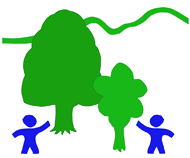Computing
Vision:
We aim to deliver a broad, balanced and ambitious computing curriculum to encourage our children to be confident, creative and independent learners and to enable them to participate effectively and safely in the digital world.
Our ambition, for our children, is for them to be able to apply their computing skills and knowledge to their next steps in education and future careers. To become masters of technology in the ever-changing, modern world in which we live, both at Catcott School, at home and in life beyond Catcott.
Rationale:
Our Computing curriculum focuses on a progression of skills in digital literacy, computer science, information technology and online safety using ‘Computational Thinking’ skills to ensure that children become competent in safely using, as well as understanding, the technology around them.
The computing Curriculum at Catcott Primary School, will be based around the National Curriculum requirements and the Teach Computing Scheme of Learning. Topics have been planned by computing experts using the latest pedagogical research to inform their planning and lesson structure.
Computing teaching at Catcott will:
· Be taught as 6 units per year spread over 6 terms.
· Be taught sequentially to build in prior knowledge and skills.
· Ensure pupils will get opportunities to use technology in a variety of ways and for a variety of purposes.
· Ensure children understand the language used when talking about computer science so that they can access subject specific learning and engage in conversations.
· Provide opportunities for practical and creative learning.
Children in KS1 & KS2 encounter 5 subject areas each year:
· computer networks and systems to help children to understand the principles underlying how data is transported on the Internet.
· creating media to enable children to become creators of technology rather than solely efficient users and appreciate this as a career. They will experience a range of software including audio and visual.
· data and information so that children begin to understand how computers represent data and how this is used around them
· programming so that children understand that computational thinking and algorithms are built behind an interface and so children can develop their own logical computational thinking skills.
Useful Websites
-
Teach Computing
At Catcott Primary School, we use Teach computing as a scheme of work as well as for training and support.
-
National Online Safety
This website has current and up-to-date resources to support the whole school community.
-
Internet Matters
Parent support resources for online safety.
-
Young Minds
Support for young people’s mental health.
-
Childnet
Online Safety Guides for parents and carers.
